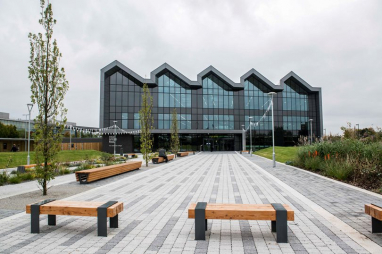- The Global Destination For Modern Luxury
- Жіночі легкі білі з чорним кросівки neonata adidas iniki 🆕 адідас інікі — ціна 1699 грн у каталозі Кросівки ✓ Купити жіночі речі за доступною ціною на Шафі , Україна #110935388 , neonata adidas primeknit cleats green and purple color
- Жилетка adidas р , IetpShops , Τυπωμένο σχέδιο adidas
- nike air jordan 1 outlet
- IetpShops , 'Teal Nebula' Hues Take This Nike Air Force 1 Out Of This World , jordan nike high jump pants shoes girls boys women
- nike air force 1 low white gold dc2181 100 release date info
- Usher Air Jordan 11 Gold Sample
- new air jordan 1 high og osb dian blue chill white cd0463 401
- 554725 113 air jordan 1 mid white black 2020 for sale
- on feet air jordan 1 low chicago
- Home
- News and analysis
- Info hubs
- Events
- Video
- Case Studies
- About us
- Magazine
- Advertising
Produced for the industry by the Association for Consultancy and Engineering
Analysis
BIM can help UK lead world in infrastructure delivery
From snag-free handovers to saving thousands of work hours on major infrastructure projects, BIM has never been more important to the infrastructure sector, says Ben Wallbank.

With the UK now boasting a record construction and infrastructure pipeline worth more than £500bn, it has never been more important for clients and contractors to save time and money.
Almost two-thirds of projects (59%) are not delivered on time and almost one third of projects come in over budget (32%). With wafer-thin construction margins averaging 2.5% it is essential for all project delivery partners such as consultants, designers, contractors and sub-contractors to harness the power of BIM to work together more collaboratively and efficiently.
Businesses that have grasped the opportunity of BIM are reaping significant cost and time savings for themselves and their clients. This has been enhanced by using effective IT and management information systems. With the ability to deliver real-time project information from across all project delivery partners, it is increasing the professional standing of the different disciplines in providing clients with accurate, timely and informative data.
By introducing mandatory BIM Level 2 compliance on centrally procured public projects last year, the government established legally binding requirements estimated to save 20% across construction and lifetime costs. However, BIM-led projects are effective only when all delivery partners come together and embrace the technology. So, BIM must become an enabler to break down the silos of different trades and services within the supply chain.
Delivering a successful BIM project starts with the client’s procurement procedure. This should outline a common set of classifications and working practices it expects during the project.
The client’s Employers Information Requirement is becoming a key driver for collaborative working and breaks down supply chain silos project by project. Its clearly defined objectives outlined during procurement become the contractual requirements and working practices of all partners.
Best practice dictates that there needs to be a common communication platform so all project partners agree ways of working, reporting and sharing information. Sharing a technology program drives consistent standards and provides greater transparency of data across the supply chain. This also provides one central, secure repository which parties access to upload, share and extract information in real-time.
As all parties need to work together effectively throughout the project it is important to have a cross-party kick-off meeting to set out consistent ways of working, reporting and sharing information so that all parties understand the terms on how to engage with each other.
Also, by establishing regular monthly/quarterly progress meetings all parties can collaboratively work together to create the best solution to issues through all project milestones. Clients and consultants can also work together to create incentives to encourage all parties to collaborate and reward them all for meeting milestones ahead of schedule.
When a company moves to adopting BIM it usually requires an element of change, adaptation and support. This is just like any other change management process where some firms will be taken out of their comfort zones, but with the right investment in people, new IT and information management systems, there will be a significant reduction in project errors, duplication, and rework so increasing productivity.
This reduction in rework was evidenced by our client Willmott Dixon. By using Viewpoint they were able to hand over the new £21m National College for High Speed Rail in Doncaster, totally snag free, two days ahead of schedule.
The standardisation and modelling of BIM processes has a client benefit beyond the delivery phase. With an estimated 80% of an asset’s costs lying beyond the construction phase, having BIM generated models with easily available information on every element of a building or infrastructure project saves time and lifetime maintenance costs.
So, for example, information on road side light about what bulb it takes, how much it costs, best method of replacements can be identified with a few clicks rather spending time searching out paper records.
Increasingly, Tier 1 contractors are implementing BIM principles in areas such as costing and time across their business. This is helping to strengthen their margins and improve efficiencies.
In a world which is digitising in every way, the idea that built assets don’t have supporting digital information is unthinkable. By working together to refine and improve BIM implementation we can help Britain become a world leader in infrastructure delivery.
Ben Wallbank is a BIM strategy manager at construction software provider Viewpoint.






